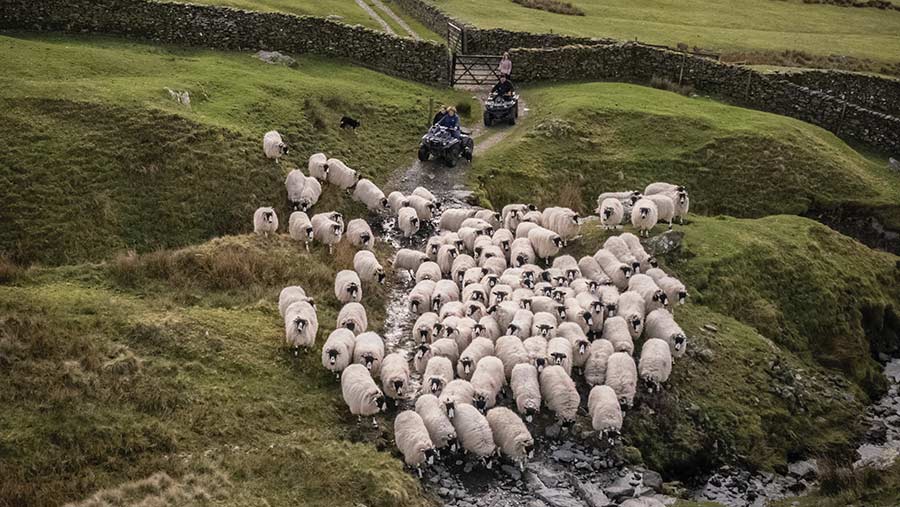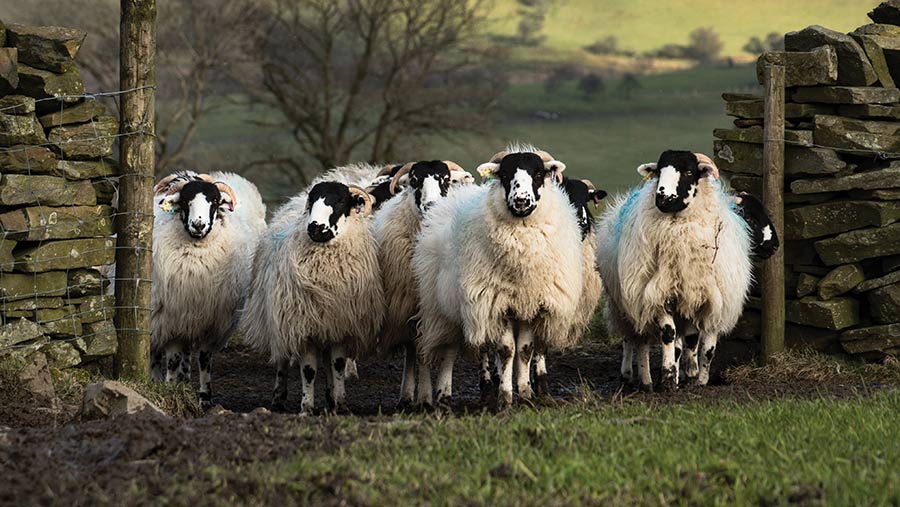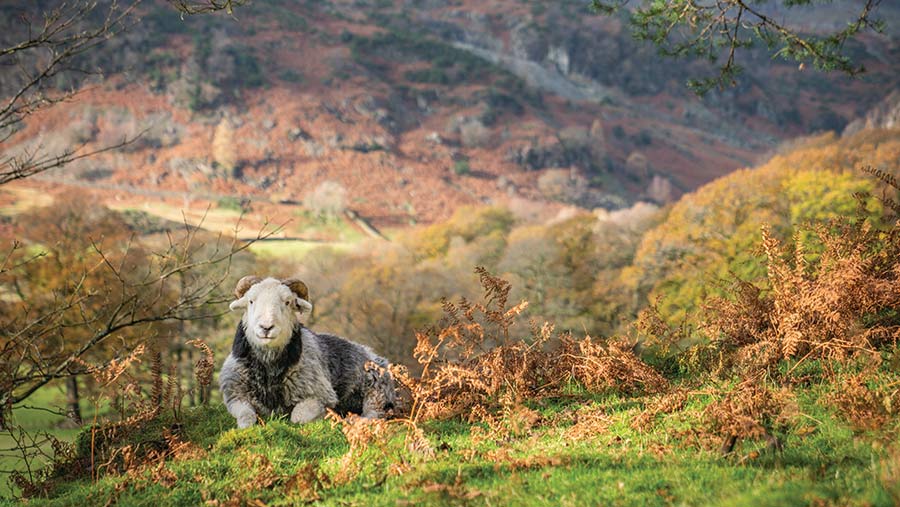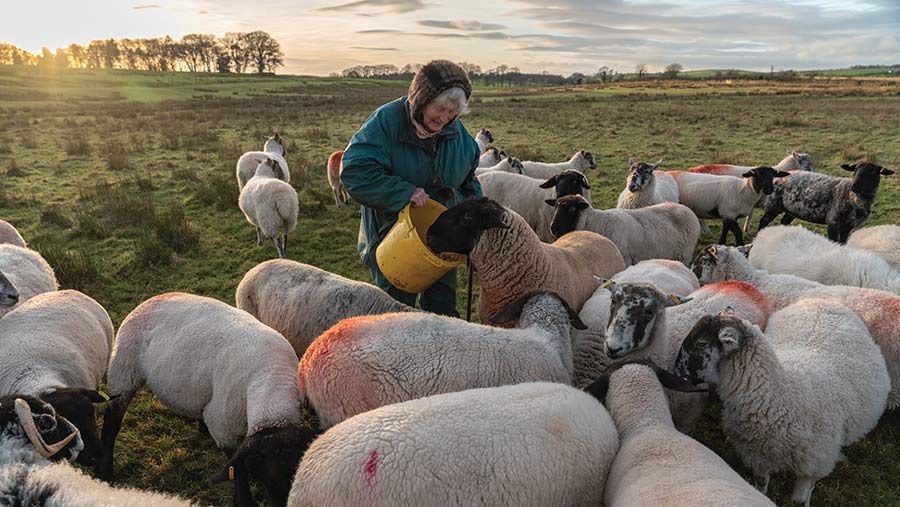Photographer captures the essence of Cumbrian farming
 © Amy Bateman
© Amy Bateman Based just outside of Kendal, on the edge of the Lake District, farmer and photographer Amy Bateman has gained national renown for her photography.
Finding her love, and talent, for capturing the essence of life on her family’s 365ha Cumbrian beef and sheep farm, she has made it her mission to tell the stories of the region’s farmers, and the landscapes they so tirelessly tend, through her lens.
See also: Farmers Weekly Photography Competition now open for entries
After training as a physiotherapist in Newcastle and moving to London in her twenties, Amy admits to growing sick of city life.
She made the decision to move north, where she met her two loves – husband, Colin, and the iconic Cumbrian landscapes.
Never a stranger to farming, Amy’s grandparents had a farm in Yorkshire, which was later sold, but despite this she has always been connected to rural life.

© Amy Bateman
After moving north, she continued working as a physiotherapist until the couple’s three daughters came along, but with the cost of childcare and change in lifestyle, she made the decision to give up her private practice to look after the little ones and work on the farm.
Amy explains that photography started as a hobby.
“I needed something more for me,” she admits. “I got a small DSLR camera and started capturing our life on the farm.
“I had nobody to share the pictures with, so I began putting them on social media through Twitter and entering a few competitions.
“I had a lot of success very quickly, which is incredibly motivating.”

© Amy Bateman
In 2019, Amy was named the British Life Photographer of the Year, after taking a self-portrait photo that showed her feeding the lambs.
She says: “It was really fulfilling because I’m very passionate about British agriculture; telling these stories and putting them out there, getting the behind-the-scenes lives of farmers into the face of the public in a way snapping on your phone just can’t do.
“When that photograph won, I was just so chuffed that it was a picture of agriculture, and that it was putting farming in front of a new audience.”
Diversification
“When I won that, we sat down and we knew that subsidies were going to be reduced after Brexit.
“We wrote a business plan about how we would try to diversify the farm, and we decided to use me as the farm diversification,” she explains.
Based on the farm, and using two other local farms, Amy now runs a range of photography workshops and holidays, having converted a stable into a studio and, most recently, welcomed the addition of glamping pods so that professional and amateur photographers alike can stay on site.
Photographers are able to spend the day touring the farm, capturing the essence of farming and the region’s unique landscapes, with shepherds and collies at work.
“They get to see rural life close up and peek behind the workings of a busy upland sheep farm,” she says.
“They leave with enhanced photography skills and a better understanding of farming life.”

© Amy Bateman
The Forty Farms project
Perhaps Amy Bateman’s greatest and most cherished project to date, Forty Farms is the result of a 12-month mission to tell the stories of 40 farms, and farmers, across Cumbria.
The book, which is a lasting legacy of the project, depicts the region’s varying landscapes and the faces behind the farms.
It was launched last year and has already been an enormous success, with more than 10,000 copies sold.
“For Forty Farms, I wanted the beginning of every chapter to have a portrait of the farmers so that when you are reading their narrative you can visualise the people and imagine them talking to you,” Amy explains.
“I think it’s really important to connect the readers with the stories, the farmers and the people.”
Amy uses her photography as a tool to reach new audiences and promote the “farm-to-fork” journey from her own farm, as well as the wider industry.
She says: “What I have really enjoyed by making the book is being able to educate people about how landscapes are managed, and how we can produce food while caring for the landscapes, as well as being able to tell the stories of people who don’t normally get their voices heard to a brand-new audience.
“The people who come to exhibitions and pick up this coffee-table book are not necessarily the people who see these images on social media.”
To accompany the book, an exhibition of Amy’s photos was launched at Rheged in Penrith, which attracted more than 60,000 visitors.
“They’ve got a beautiful gallery which we filled with Forty Farms. The feedback was extraordinary.
“We had double the number of people they had ever had at an exhibition before over the course of the three months it was there.
“The display then moved on to Windermere Jetty, and we had another 40,000 visitors there.”
What’s next?
For the first time, the exhibition is due to move out of Cumbria, when it will be displayed in the Food Museum in Stowmarket, Suffolk.
“It is going to be really interesting to see how it is received because, of course, it is based on Cumbria,” Amy explains.
“However, the relatability across all of the 40 farms and the geology of Cumbria means we’ve got the high peaks of the upland farms, we’ve got the salt marshes, and the fertile planes in the Eden Valley, so a whole range of farms is represented.”
Beyond this, Amy hopes to bring the exhibition to London to share the narratives with an even wider audience. “We’ve got to get it into London somehow,” she says.
“These are really important stories and they have to be told. They have to be out there.”
Photo competition
Got a picture of your own that you are proud of? If so, then why not submit it to the Farmers Weekly 2023 photography competition. Entries close on 21 November 2023.
